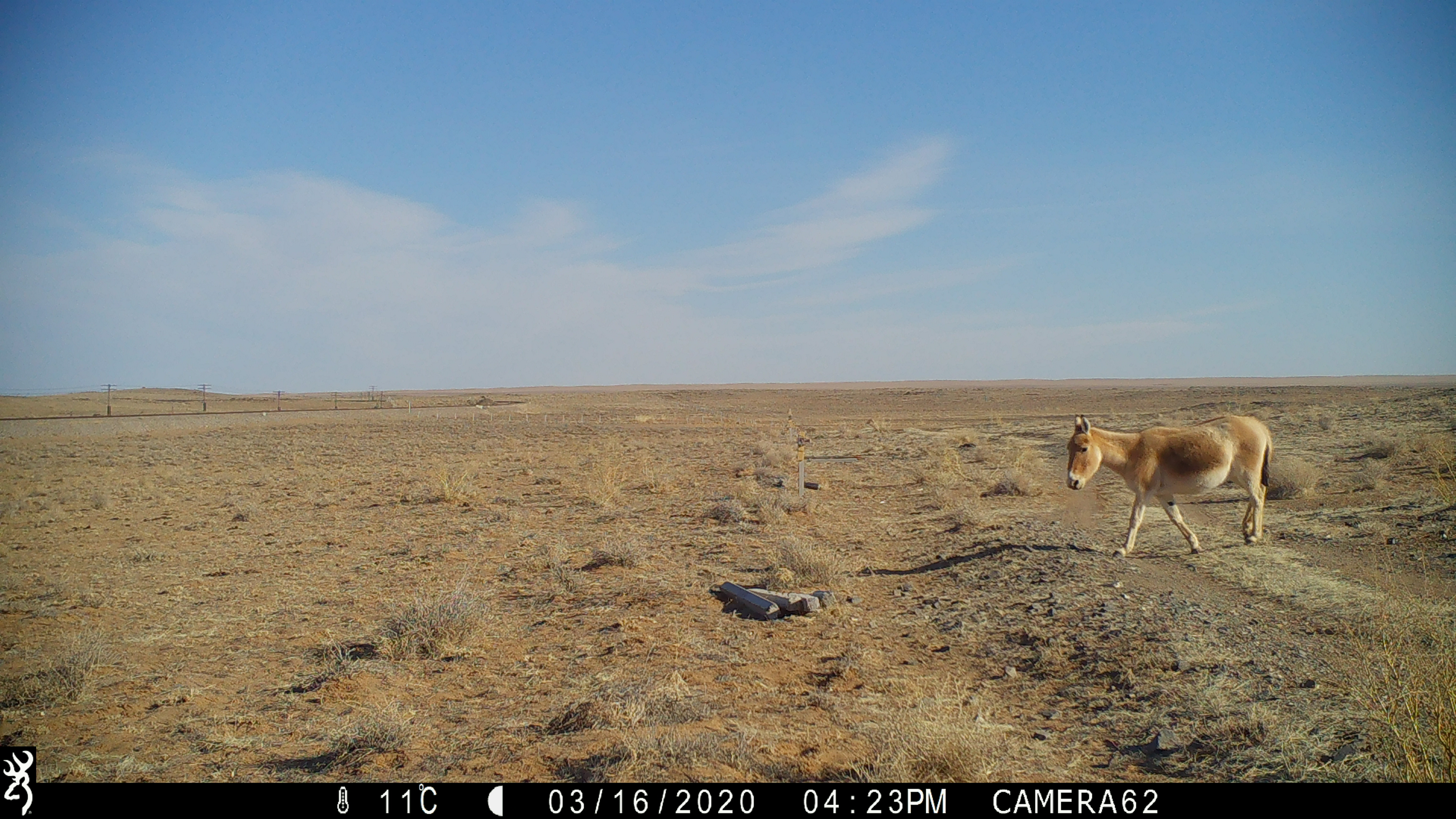ULAANBAATAR, MONGOLIA (June 10, 2020) – The Wildlife Conservation Society (WCS) released a photo today of a single Asiatic wild ass or khulan (Equus hemionus hemionus) crossing a previously impenetrable barrier along the Trans Mongolian Railroad – the first known crossing by this near-threatened species into the eastern steppe in 65 years.
The crossing is part of the new Trans Mongolian Railroad ‘Wildlife Friendly’ Fence Corridor, a project that creates simple modifications to existing fence designs that run the length of the railroad. In this initial pilot phase, gaps at two locations now provide safe passage for khulan, with plans for more follow.
The project was implemented by WCS, in partnership with the Ulaanbaatar Railroad Authority, Mongolian Academy of Sciences, and funded by Oyu Tolgoi LLC, the Secretariat for the Convention on Migratory Species, Ministry of Nature, Environment and Tourism, Ministry of Roads Transportation Development.
The photo was taken some 750 kilometers from the capital city Ulaanbaatar by one of 85 remote cameras set up along the railroad by WCS conservationists. In addition to khulan, hundreds of herds of Mongolian gazelle and goitered gazelle have been documented using the crossings.
Said WCS Mongolia Conservation Director Dr. Kirk Olson: “The documentation of the return of khulan to the eastern steppe is an event that should be heard around the world. A seven-decade old barrier dividing one of the remotest places on the planet is coming down and a starting point for reconnecting the Gobi-Steppe Ecosystem and revitalizing the spectacular wildlife migrations that dwarf the more celebrated Serengeti Ecosystem.”
Since completion of the Trans-Mongolian Railroad in 1955, khulan have been blocked from accessing what was their former range in the eastern grasslands of Mongolia. Each year thousands of Mongolian gazelles are entangled in the corridor fencing and many more starve after being prevented from reaching quality pasture during their nomadic movements.
Habitat fragmentation, resulting from the onslaught of the construction of highways, railroads, and pipelines around planet is one of the leading contributors to biodiversity loss. The Gobi-Steppe Ecosystem is one of the largest grazing ecosystems on the planet and is threatened with fragmentation due to the construction of new transportation corridors to facilitate international trade.
The population of khulan in Mongolia is estimated at around 60,000 individuals and classified by the IUCN as ‘Near threatened’ with extinction. The population stronghold, centered in Mongolia’s South Gobi Desert, had been steadily shrinking from habitat degradation and a growing tangle of development and population expansion across its former range. There are an estimated 1,000,000 Mongolian gazelles across nearly 850,000 square kilometers.
###
WCS (Wildlife Conservation Society)
MISSION: WCS saves wildlife and wild places worldwide through science, conservation action, education, and inspiring people to value nature. To achieve our mission, WCS, based at the Bronx Zoo, harnesses the power of its Global Conservation Program in nearly 60 nations and in all the world’s oceans and its five wildlife parks in New York City, visited by 4 million people annually. WCS combines its expertise in the field, zoos, and aquarium to achieve its conservation mission. Visit: newsroom.wcs.org Follow: @WCSNewsroom. For more information: 347-840-1242.
Original post https://alertarticles.info
